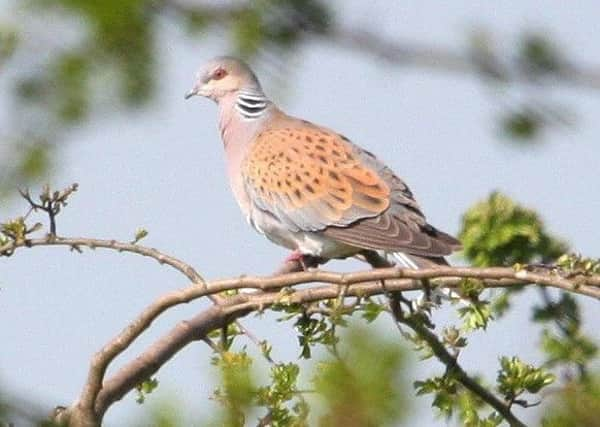Birdwatch: Return of the turtle dove


Its name has nothing to do with turtles but is derived from its song, a double note that sounds like the brr brr of a telephone, while its Latin name is turtur.
They are most attractive birds with dappled black and rufous upperparts, pink breast and grey-blue head with a small black and white marks on the neck.
Advertisement
Hide AdAdvertisement
Hide AdSadly the turtle dove, once widespread across the English countryside, has disappeared from many areas and is now on the Red List of birds of maximum conservation concern.
But there is one place in Yorkshire where they continue to prosper, the North York Moors forests and this summer, for the second year running, a survey is being carried out to find out why and if the findings can be used to help them further.
Last year Cropton forest was chosen for the survey, this year it is the turn of Dalby forest.
The survey involves volunteers each making two visits to one of 30 squares chosen at random and covering a range of differing habitats.
Advertisement
Hide AdAdvertisement
Hide AdOnce all the results are assessed, the types of forest habitat best suited to turtle doves should become clearer and the forest management adapted to help them. Adaptations of forest management have been used with great success to help the once threatened nightjar and it is hoped that turtle doves might be helped in a similar way..
Cath Bashforth, Forestry Commission Ecologist for Yorkshire, who is leading the survey, said that last year’s data revealed several reasons why turtle doves are doing well in the forests.
They feed on weed seeds, particularly from a small plant called fumitory that grows among cereal crops and which is now easily killed by herbicides.
A plant closely related to fumitory, climbing corydalis, grows in clear fell areas and young restocked plantations in the forests and it could be that turtle doves are finding the seeds from these a good substitute.
Advertisement
Hide AdAdvertisement
Hide AdThere are also plenty of seed bearing plants on the wide verges at the edge of forest tracks, water from puddles, and plenty of nest sites in young conifer plantations to replace those in the tall hedgerows that have now gone from many places.
A rare sight in Yorkshire, a stone curlew, was seen in a field off Potato Lane at Blackmoorfoot reservoir, Huddersfield on Tuesday.
Sightings along the east coast included a Siberian stonechat at South Landing, Flamborough and a wryneck at Kilnsea, another was seen and heard in the grounds of Ingleborough Hall, Clapham, North Yorkshire.
Three spoonbills visited Filey Dams and Flamborough Head while another was on the St Aidan’s nature park, Leeds. Two black-winged stilts were at Blacktoft Sands. Seven dotterels were present on Ingleborough.